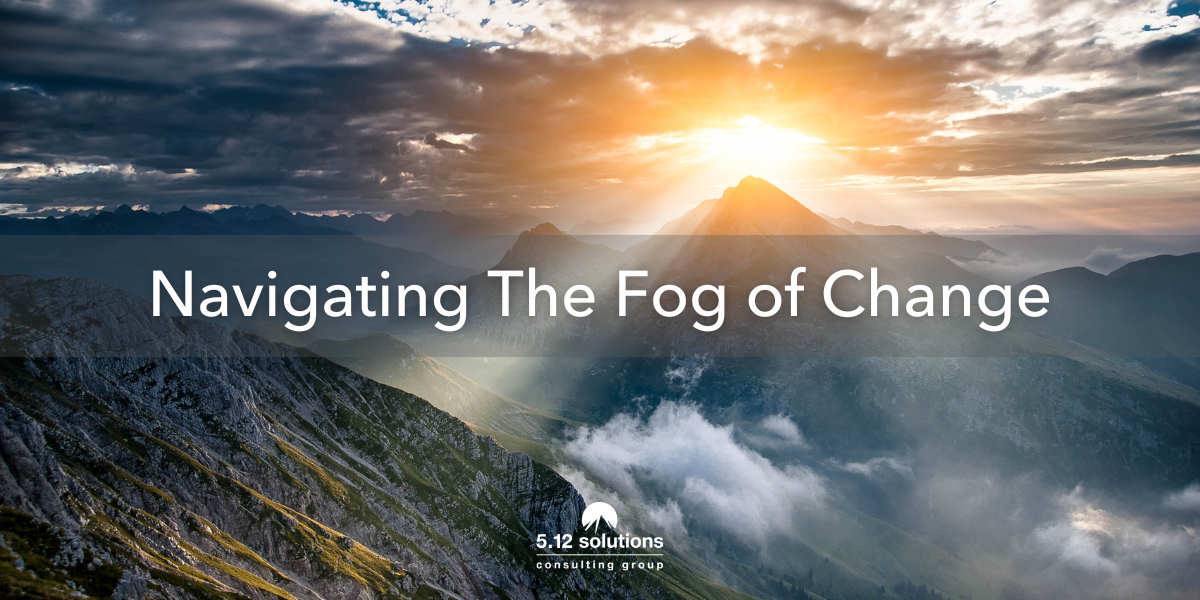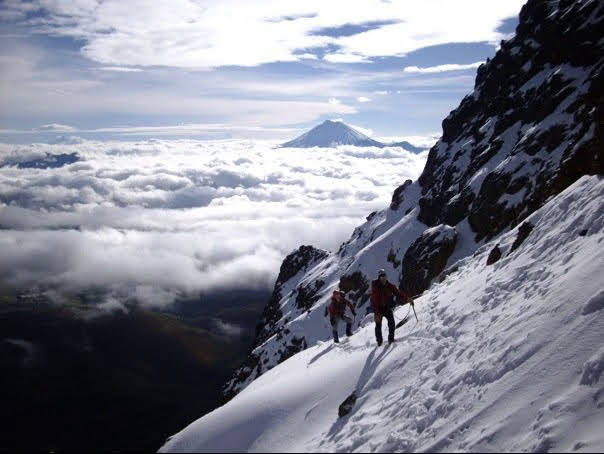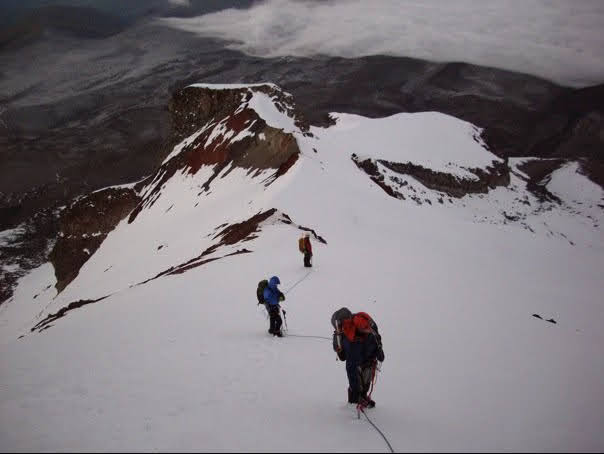Navigating the Fog of Change in the Workplace
We left our high camp, a mountain hut at 16,404 feet, at 11:30pm. Our mission was to summit the 20,548’ Chimbarazo in Ecuador. It was a clear evening, a little warmer than preferred, as the higher temperatures would destabilize the snow conditions and increase the risk of avalanche as soon as the sun rose.
Our climbing team of four were roped together for protection as we navigated the creviced terrain. The route appeared straightforward when we’d scouted it the day prior. But in the darkness of the night, we strayed off course and were funneled into a large gulley that had been devastated by an avalanche only a few days before.
Our pace slowed as we found ourselves in nearly vertical ice climbing conditions, laboriously navigating a short technical pitch of ice, one climber at a time. By 5:30am, I was literally zonked. I couldn’t go on. It was only with the support of my climbing team that I would make it off the mountain safely.
Connection With People
Relationships among our mountaineering team were forged long before our climbing trip. At the time, we were all members of Rocky Mountain Rescue, a mountain rescue team in Boulder, Colorado, relied upon by hundreds of people each year to help when they get lost, injure themselves on a rock climb, or need any form of assistance in the backcountry.
We’d been through countless hours of training together, supported each other on rescue missions, and had fun socially. We went out for beers, climbed and mountain-biked together on weekends, and even attended big events in each other’s lives.
It was through those shared experiences that we built a strong foundation of connection, where we trusted each other and felt a sense of belonging. That deep level of connection enabled us to give each other the benefit of the doubt and to have the freedom to speak freely. That deep bond would ultimately save my life.
Certainty as a Result of Safety
On most mountain rescue teams, there is a Safety Officer—someone assigned to an accident site to double-check all the systems and ensure scene safety. Rocky Mountain Rescue doesn’t do that. Instead, everyone on the scene assumes the role of Safety Officer.
Individual team members double-check their own systems and what others around them are doing as well. So, when a team member builds an anchor that will support lowering a litter from a 500-foot rock face, other team members chip in to ensure the system was built correctly—and will get the patient, two litter bearers, and any additional people attending the litter to the ground safely.
The concept of “everyone is a Safety Officer” is a radical idea in mountain rescue, but it enables the team to perform their missions in a physically safe manner – more importantly, in an emotionally safe manner. That safety mentality was embedded into every member of our climbing team.
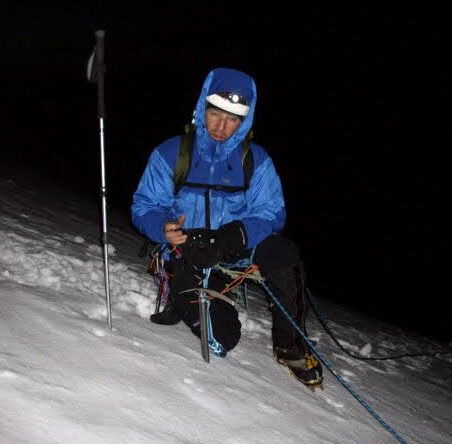
Because of the deep level of connection we had built, we forged a deep sense of certainty, as a result of safety. We felt psychologically safe with each other. Meaning, we were comfortable taking interpersonal risks, like offering help, asking for help or even admitting a mistake, without feeling marginalized or humiliated.
That level of safety we had created on our team enabled me to raise my hand and say, “Guys, I can’t go on. I need some help.” That may sound easy, but after months of training and making a significant time and financial investment to summit one of the most well-known and challenging peaks in South America, I was not only disappointing myself, I was also disrupting the dreams and aspirations of my good friends. It was a highly vulnerable experience.
Contributions Matter
When we stopped at around 5:30am, we’d been climbing for over six hours. It was still dark and the conditions were variable. My team surrounded me, offered me some food and encouraged me to drink water. I’m sure they were thinking, maybe with a little break and some calories, he’ll recover and we can continue.
But I didn’t. I was in a fog. We knew we were running out of time because as soon as the sun rose, the snow pack would begin to warm and increase the threat of a slide. We had a short window to get off the mountain. My climbing partners listened, heard my concerns and we made a new plan. We had to turn around, and we did it together.
My voice was heard. My contributions mattered.
Clarity of the What and How
By 5:45, the entire team was descending. We easily could have split the team and sent two climbers to the summit while the other two continued their descent to the hut. But that’s not what we had previously agreed upon.
The plans to turn around were established weeks prior, well before leaving on our expedition. We had met as a team at my house in my family room to finalize logistics and planning. We agreed on the contents of our first aid kit, divided up gear amongst each other, and aligned who was coordinating transportation and climbing permits. We were clear on our goal and the tasks that would need to happen to support that goal. But we were also clear on how we would be when we were on the mountain.
We established operating agreements on what would happen if we encountered unexpected obstacles or if someone couldn’t go on. We all agreed that if one person said they couldn’t continue, the entire team would turn around. That agreement was set in motion before the emotions of the chaos and fog occurred on the mountain. We had clarity of what we were setting out to do and how we were going to go about it.
Navigating the Fog of Change
Today’s pace of change is the slowest you and I will experience for the remainder of our careers. It will only increase from here on out, as the level of complexity and unpredictability escalate in our modern workplace.
And like the fog that can set in on a mountain peak, it can settle and stymie change at work too, leading to complacency and consternation. The good news is that the single most unique characteristic that has defined the human race and enabled us to survive over time as a species is our ability to adapt. I believe that when we embrace our humanity at work, we can support our natural adaptability and help lift the fog of change.
The Four Core Human Needs
In my work as an executive coach, coaching and training tens of thousands of leaders globally, I’ve noticed there’s an underlying pattern among most people at work:
Regardless of gender, demographics, or geography, I have observed that people have a common set of needs.
The four core human needs from my book The Deeply Human Workplace can help us understand the workplace needs that all people have and guide us through the fog. If we can tap into those needs, we can create a healthier, aligned, trusting, committed, productive, and human workplace – a place that is better equipped to deal with increasing complexity.
But when humans don’t get their needs met at work, unhealthy behaviors may emerge. For example, when a team member doesn’t feel connected to others, their millions of years old brain (which is wired for survival) may detect a threat, push people away and remain protective during critical conversations. Below is an overview of the four core needs along with a mindset and behavioral shift that leaders can make to start helping others get their needs met at work.
#1 – Connection
 Connection is the need to feel like you belong and are loved. Longitudinal studies show that the quality of our social connections is the primary predictor of long-term physical and mental health and happiness.
Connection is the need to feel like you belong and are loved. Longitudinal studies show that the quality of our social connections is the primary predictor of long-term physical and mental health and happiness.
It’s the reason why many organizational engagement surveys ask the question, “Do you have a best friend at work?” During times of change, when people feel connected, they are more likely to take risks, tell you the truth, and engage in meaningful conversations that help move the business forward. With the increasing complexity of today’s work environment, Connection becomes the foundation for agility and speed.
To create connection during change, leaders need to:
- Shift their mindset to realize that people seek love and belonging in both personal and professional relationships.
- Shift their behaviors to create an open environment of communication in meetings, 1-1s and other settings.
#2 Certainty as a Result of Safety
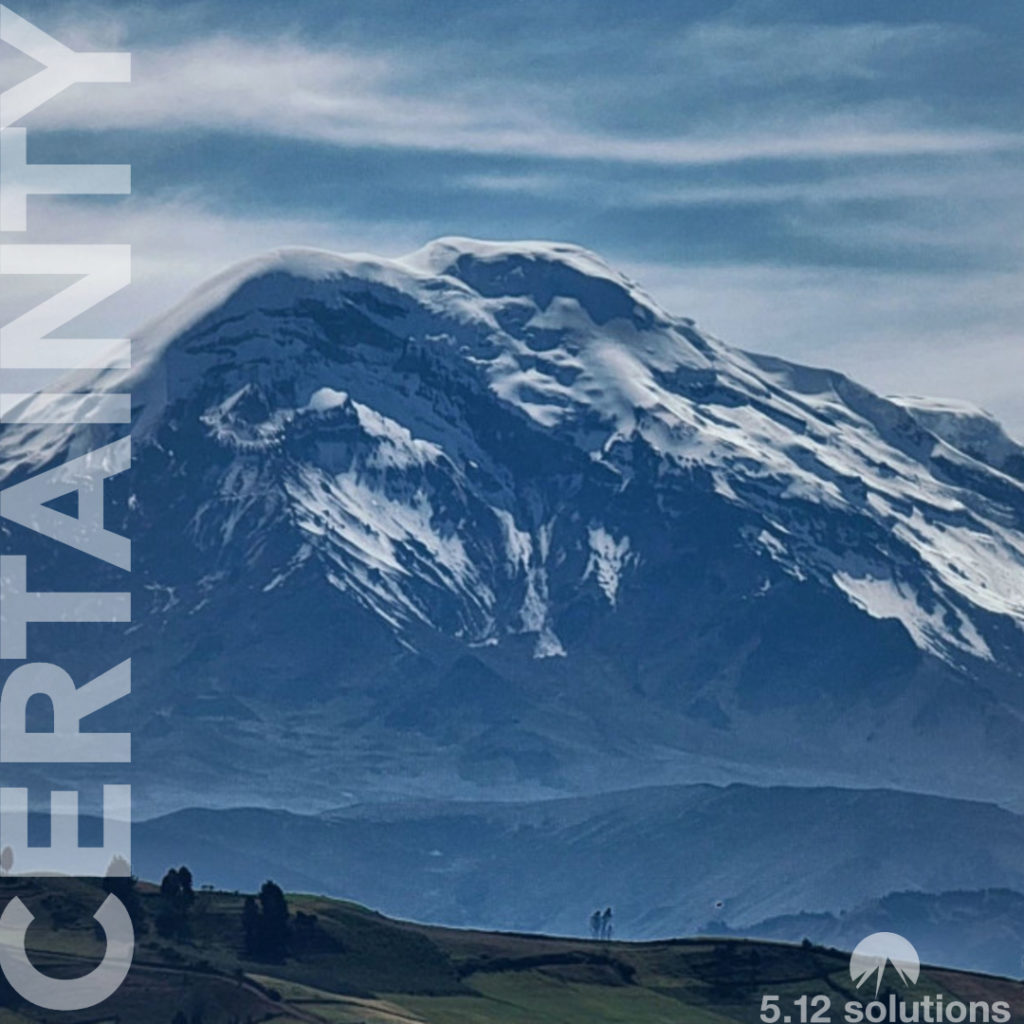 Certainty, like in the Rocky Mountain Rescue Group, is the outcome of a safe environment, both physically and psychologically. When people don’t feel safe and operate out of fear, it becomes much more challenging to navigate the complexity of change.
Certainty, like in the Rocky Mountain Rescue Group, is the outcome of a safe environment, both physically and psychologically. When people don’t feel safe and operate out of fear, it becomes much more challenging to navigate the complexity of change.
Issues simmer under the surface, the meeting after the meeting occurs, and people revisit decisions over and over and over again. When people feel safe, creativity thrives. New ideas emerge. Certainty as a result of safety allows people to take interpersonal risk when they are most vulnerable in a changing environment.
To create certainty during change, leaders need to:
- Shift their mindset to realize that when people experience fear, they are less able to engage in analytic thinking, creative insight, and problem solving. In short, it’s hard for people to do their best work when they are afraid.
- Shift their behaviors to give people permission to engage in healthy conflict, and to reward team members when they take interpersonal risks, such as speaking up when others have different points of view.
#3 Contributions are Valued
 When people feel valued, team members are more likely to listen to each other in order to understand. They are more inclined to:
When people feel valued, team members are more likely to listen to each other in order to understand. They are more inclined to:
- Draw each other into the conversation, instead of pushing others away
- Appreciate differences of opinions and ideas
We’re all familiar with stories of change management gone wrong. They are usually filled with people who didn’t feel listened to or valued and who become resistors to change efforts.
To ensure contributions are valued during change, leaders need to:
- Shift their mindset to focus on not just what isn’t working, but what is working.
- Shift their behaviors to move beyond a simple “thanks” when they recognize others and instead to link peoples’ contributions to the change effort goals.
#4 Clarity of the What and How
 Clarity of the what is the need to understand the expected outcomes.
Clarity of the what is the need to understand the expected outcomes.
Clarity of the how is the need to understand behavioral norms and expectations.
When people understand the what and the how, they clearly see the connection behind why they need to change—and the right behaviors that will enable them to be successful within a changing environment.
To ensure clarity of the what and how, leaders need to:
- Shift their mindset to think more broadly about the organization, not just their team, and take a more systems-oriented approach to navigating change.
- Shift their behaviors to stay in conversation with peers who may have competing priorities on any given change effort.
Navigating through the fog of change is a very human experience. As our world becomes more complex, our humanness will not only become more important— it is our competitive advantage. My hope for you is that by understanding the core needs that all humans have at work, it will help guide a change in culture as you change the business.
After all, it will be the humans that will have to execute the business strategy…
Be ready to confidently navigate the change that lies ahead: Get your free copy of my bestselling book, The Deeply Human Workplace today.

